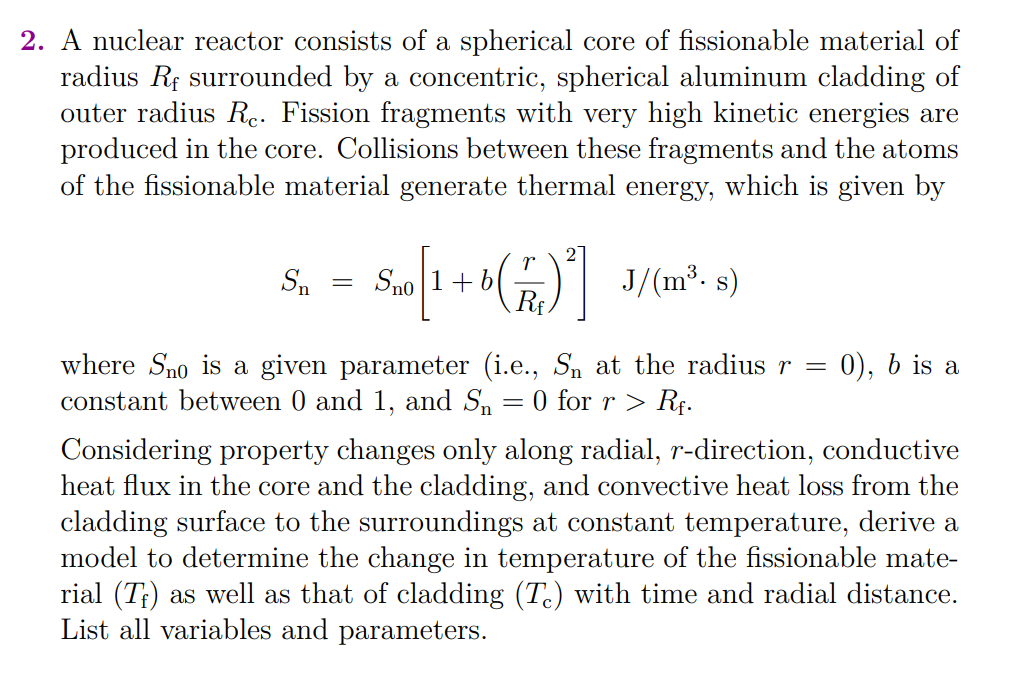Answered step by step
Verified Expert Solution
Question
1 Approved Answer
Please show steps with clear explanation. A nuclear reactor consists of a spherical core of fissionable material of radius Rf surrounded by a concentric, spherical

Please show steps with clear explanation.
A nuclear reactor consists of a spherical core of fissionable material of radius Rf surrounded by a concentric, spherical aluminum cladding of outer radius Rc. Fission fragments with very high kinetic energies are produced in the core. Collisions between these fragments and the atoms of the fissionable material generate thermal energy, which is given by Sn=Sn0[1+b(Rfr)2]J/(m3s) where Sn0 is a given parameter (i.e., Sn at the radius r=0 ), b is a constant between 0 and 1 , and Sn=0 for r>Rf. Considering property changes only along radial, r-direction, conductive heat flux in the core and the cladding, and convective heat loss from the cladding surface to the surroundings at constant temperature, derive a model to determine the change in temperature of the fissionable material (Tf) as well as that of cladding (Tc) with time and radial distance. List all variables and parametersStep by Step Solution
There are 3 Steps involved in it
Step: 1

Get Instant Access to Expert-Tailored Solutions
See step-by-step solutions with expert insights and AI powered tools for academic success
Step: 2

Step: 3

Ace Your Homework with AI
Get the answers you need in no time with our AI-driven, step-by-step assistance
Get Started


